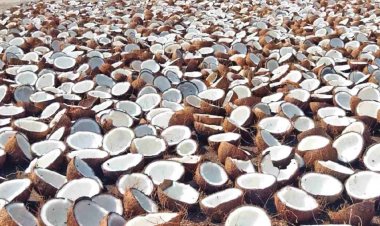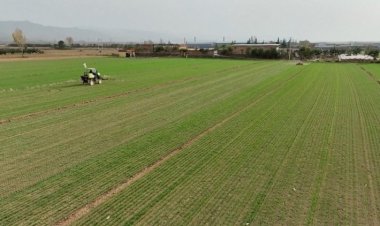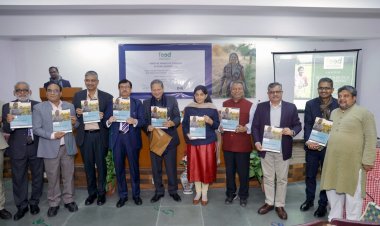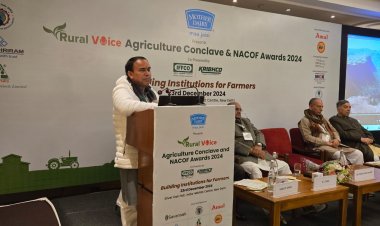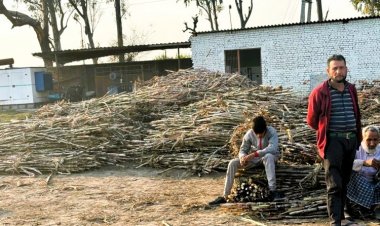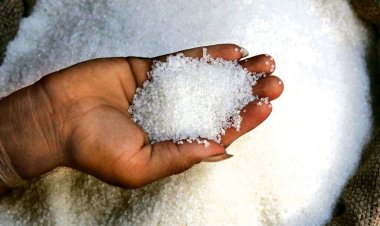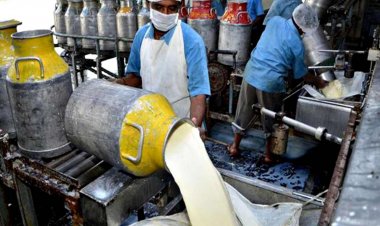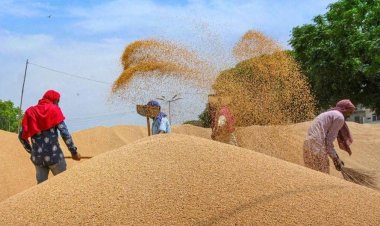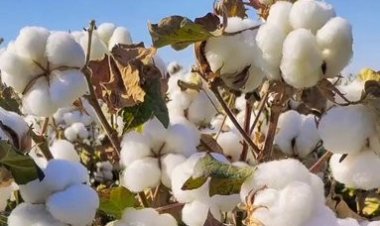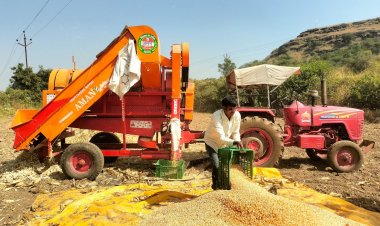A ray of hope for faltering jute industry
The government has recently taken a decision that is likely to give a boost to jute workers, farmers and mills in West Bengal and Tripura. The decision on mandatory use of jute in food grains and sugar packaging taken by the Cabinet Committee on Economic Affairs (CCEA) is good news not only for West Bengal and Tripura, but for the jute sector in Bihar, Odisha, Assam, Meghalaya, Andhra Pradesh and Telangana.
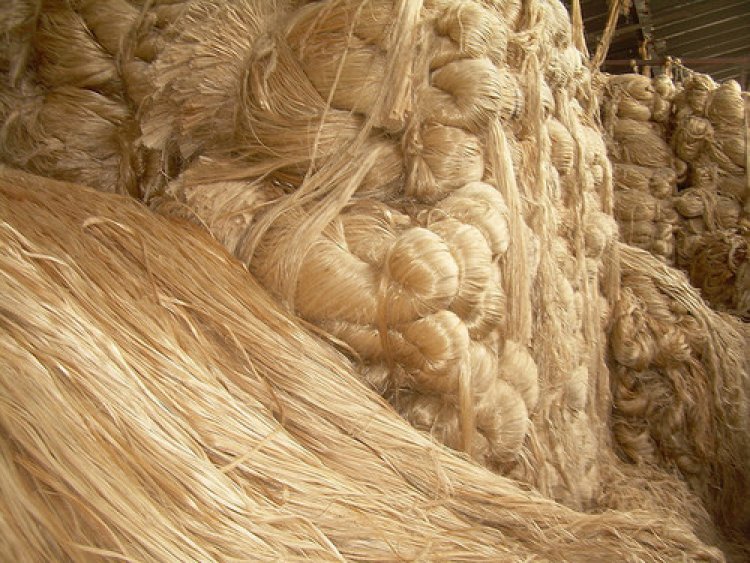
Jute is a home-grown product and pride of West Bengal. But the industry is faltering. Lack of market, government procurement and diversification, poor infrastructure as well as the sorry state of Indian jute mills are responsible for the current plight of the jute sector.
The decline of India’s jute economy can be gauged from the fact that production of the cash crop has fallen by over 13 per cent in the past decade — to 1.77 million tonnes in 2021-22, from 2.03 million tonnes in 2011-12 — according the third advance estimates released by the Union Ministry of Agriculture and Farmers Welfare in May 2022.
Against this backdrop, the government has recently taken a decision that is likely to give a boost to jute workers, farmers and mills in West Bengal and Tripura.
The decision on mandatory use of jute in foodgrains and sugar packaging taken by the Cabinet Committee on Economic Affairs (CCEA) is good news not only for West Bengal and Tripura, but for the jute sector in Bihar, Odisha, Assam, Meghalaya, Andhra Pradesh and Telangana.
The CCEA meeting gave its nod to reservation norms for mandatory use of jute in packaging of rice, wheat and sugar for the Jute Year 2022-23. The mandatory norms provide for full reservation for packaging of foodgrains and 20 per cent reservation for packaging of sugar in jute bags, which will be a big boost for West Bengal.
The jute industry occupies an important place in the national economy of India, particularly in West Bengal where nearly 75 jute mills operate and provide livelihood to lakhs of workmen. With 70 of the 93 (2016 data) mills in India, West Bengal is the hub of India’s jute industry, valued at around Rs 10,000 crore. Several mills are on the verge of closing as reported by many media.
The reservation norms under the JPM Act provide for direct employment to 3.70 lakh workers and protect the interest of approximately 40 lakh farm families in the jute sector.
The JPM Act, 1987, protects the interest of jute farmers, workers and persons engaged in jute goods’ production. 75 per cent of the total production of the jute industry is Jute Sacking Bags of which 85 per cent is supplied to the Food Corporation of India (FCI) and State Procurement Agencies (SPAs) and remaining is exported/sold directly.
The government purchases jute sacking bags worth approximately Rs. 9,000 crore every year for packing of foodgrains. This ensures a guaranteed market for the produce of jute farmers and workers. The Average Production of Jute Sacking Bags is about 30 lakhs bales (9 lakh MT) and the Government says it is committed to ensure complete off-take of the production of jute bags in order to protect the interest of jute farmers, workers and persons engaged in the Jute Industry.
The reservation norms would further the interest of domestic production of raw jute and jute packaging material in India, thereby, making India self-reliant. It will also help protect the environment because jute is a natural, bio-degradable, renewable and reusable fibre and hence fulfills all sustainability parameters. The CCEA decision to support domestic jute production is, therefore, in line with Aatmanirbhar Bharat initiative.
India is the largest producer of Jute followed by Bangladesh and China. It is also known as the golden fibre and is one of the most significant industries after cotton in India. Bangladesh, however, tops the list in terms of acreage and trade as it accounts for three-fourths of the global jute exports in comparison to India’s 7 per cent.
While India’s production and acreage declined, Bangladesh’s production and area under jute has increased over the years. India is still the largest producer of jute but in terms of acreage, Bangladesh is the largest cultivator. It also accounts for nearly 75 per cent of the global jute exports, while India’s share is just 7 per cent, according to a Commission for Agricultural Costs and Prices (CACP) report.
Now, a thorny issue is the procurement of raw jute at a higher cost but the final output is being sold at higher rates. The government procures raw jute from farmers at a fixed Minimum Support Price (MSP) which is Rs 4,750 per quintal for the financial year 2022-23. Reports show that this reaches the mill at Rs. 7,200 per quintal, that is, Rs. 700 more than the Rs. 6,500 per quintal cap for the final product.
The jute mills do not procure raw material directly from the farmers because the mills are far from farmers and the process of procurement takes time. No single farmer produces enough to meet the entire demand of a mill. Thus, the middlemen or traders procure raw jute from multiple farmers and then trade it to the mills.
Jute is majorly grown in the delta shared by West Bengal and southwest Bangladesh, and in parts of Assam, Meghalaya and Tripura. It grows in a warm and humid climate with temperatures between 24° C to 37° C. It is totally biodegradable and recyclable. It not only consumes carbon dioxide and releases oxygen but also increases soil fertility if grown in crop rotations. It does not produce toxic gases while burnt.
Partition hit the Indian jute industry
By the year 1910, Calcutta Mills had become the world’s largest jute producer, providing employment to more than 300,000 people. During the Crimean War and later in World War I, the jute was found useful in military works and growing demand helped Bengal to establish its monopoly over it.
With the partition of Bengal into West Bengal and East Pakistan (today’s Bangladesh), the Indian Jute industry was severely hit as over 75% of the jute-growing land went to East Pakistan.
Jute is extensively used for packaging purposes. In fact, the provisions of the Jute Packaging Material (Compulsory use in Packing Commodities) Act, 1987 made it compulsory to pack 100% production of foodgrains and 20% sugar production in jute bags. It is also used in the manufacturing of products like furnishing materials, fashion accessories, floor coverings or varied applications in paper and textile industries.
Initiatives taken for Jute Sector
The government has taken two major initiatives for the sector. Since jute costs higher than synthetic fibres and packing materials, particularly nylon and thus losing its market, the government brought the Jute Packaging Materials Act, 1987 to protect the interests of about 4 lakh workers and 40 lakh farm families.



 Join the RuralVoice whatsapp group
Join the RuralVoice whatsapp group


















